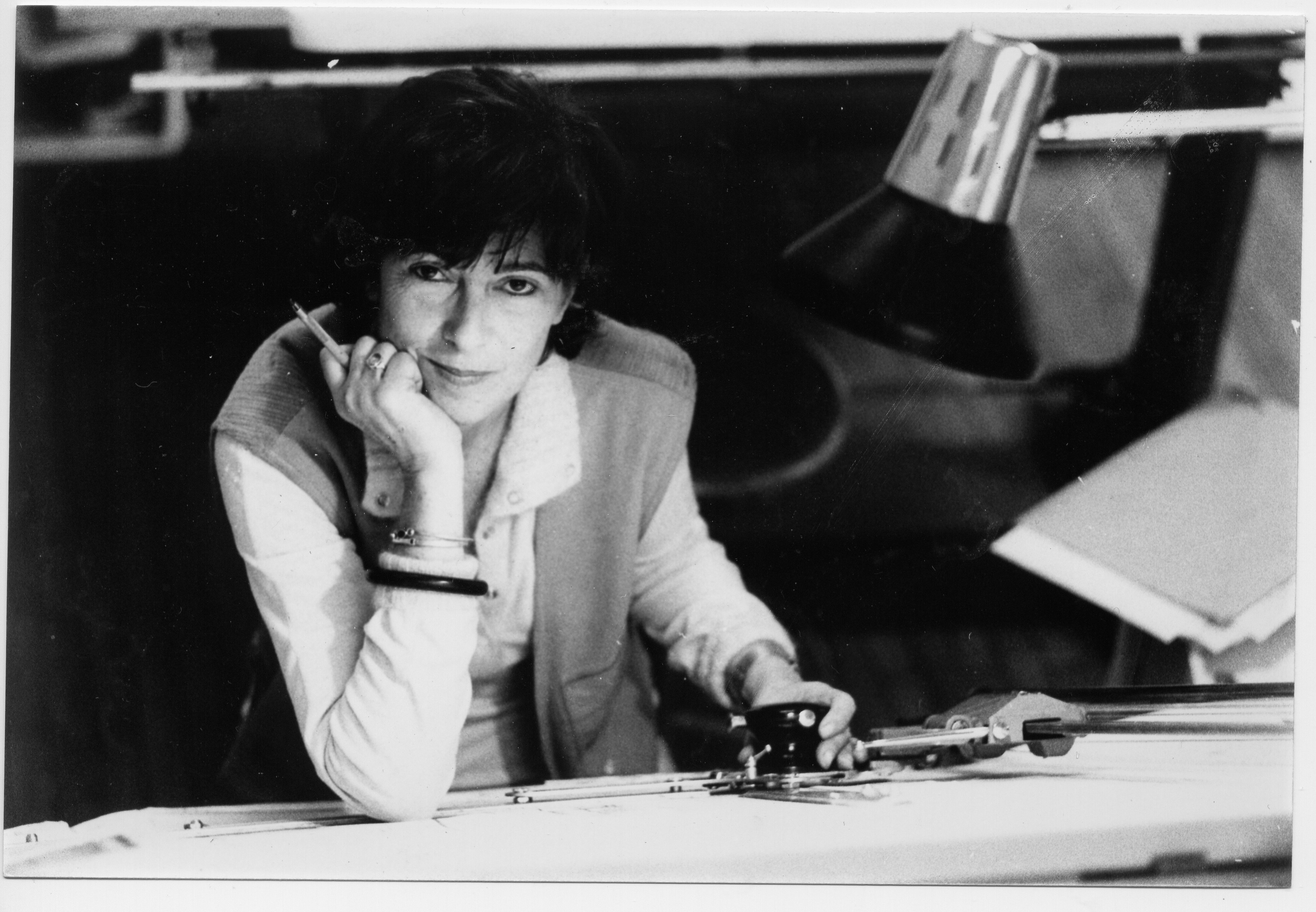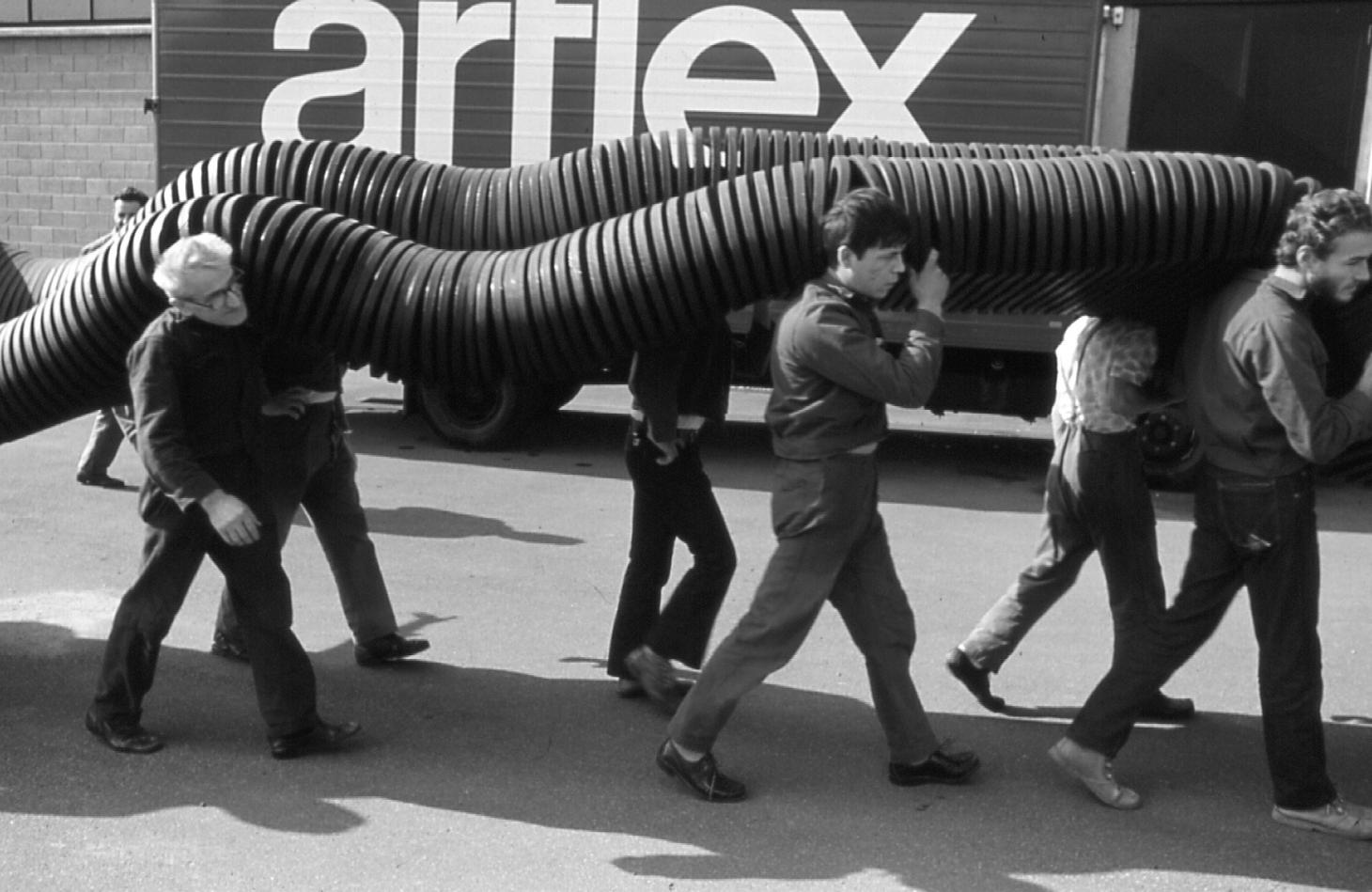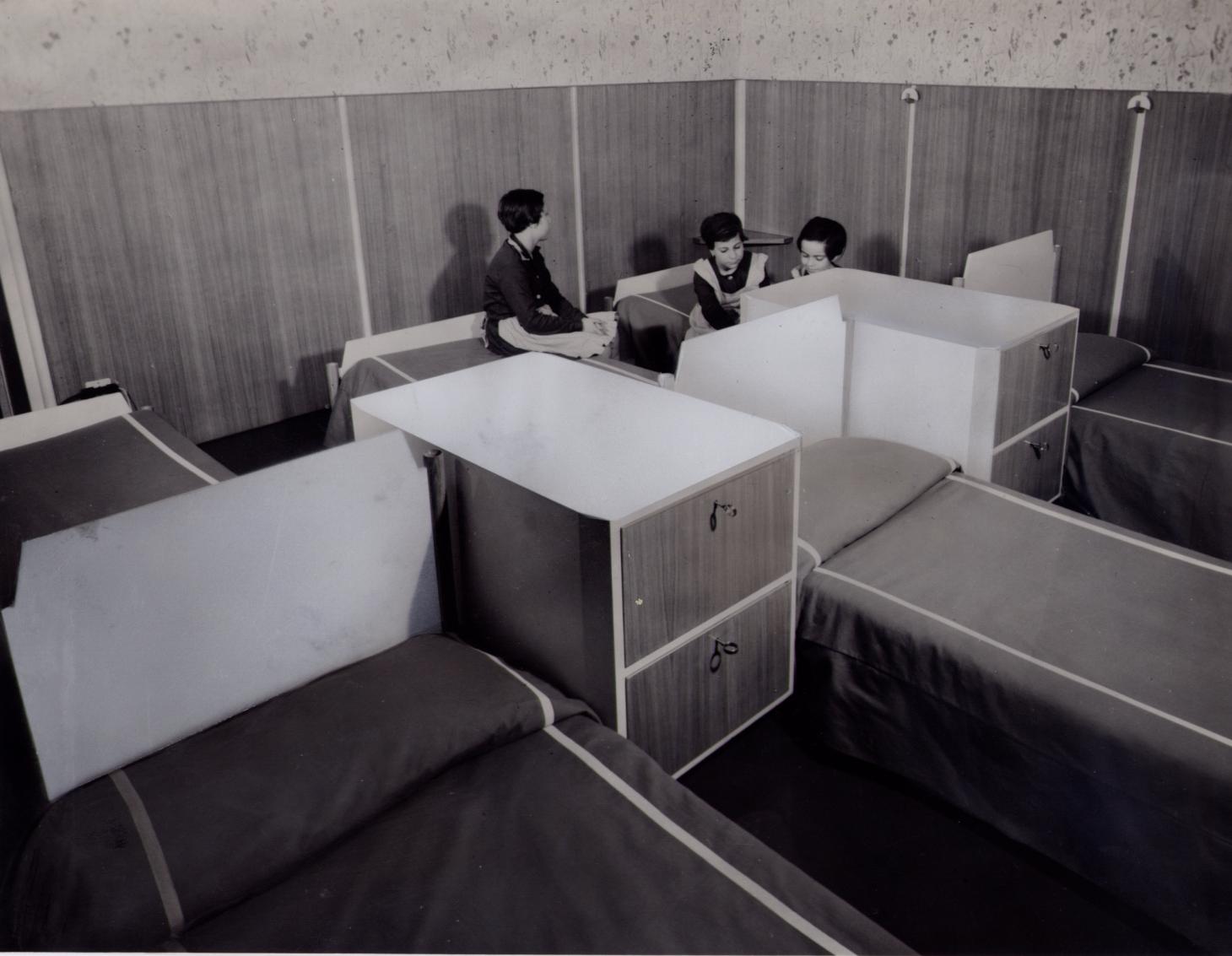In memoriam: Cini Boeri (1924 - 2020)
The Italian architect and designer Cini Boeri championed economy and functionalism as a philosophy to make the world a better place

Cini Boeri (1924 - September 9 2020), born Maria Cristina Mariani Dameno, was an Italian architect and designer known for her interest in functionalism and economy. She believed that beauty was the result of function and only took pleasure from adding useful, long-lasting architecture and design to the world. For her, the purpose of these objects, buildings and spaces, was to help people and make them happy.
Boeri graduated from Milan Polytechnic in 1951, alongside just two other female graduates. She took an internship at Gio Ponti's studio, before working for Marco Zanuso across architecture and industrial design until 1963, when she would set up her own studio, Cini Boeri Architetti.
Her interest in industrial design and economy – at every stage from materials, to technology and manufacture – perhaps grew from her experience growing up during World War II. As a daughter to staunchly anti-fascist parents, at just 18 years old she was couriering important documents across the country for the opposition, and even sewed herself a skirt out of parachute material.

Cini Boeri's Serpentone Sofa at Arflex's factory
Many of her designs were modular or used a very limited palette of materials, and often strictly a single material. The Serpentone sofa designed for Arflex in 1971 was made only of polyurethane foam and it was sold by the metre – so the continuinously snaking sofa could fit and mould to the proportions of any space. In 1972, also for Arflex, this thinking was evolved into a more traditional system of armchairs, beds, sofas, and poufs in the Strips system, also frameless and made entriely of polyurethan foam, which won a Compasso d'Oro.
Elegance was always the product of Boeri's economy. This can be seen particularly in the Lunario table series of 1970 produced by Gavina, where Boeri was a contributing designer, and distributed by Knoll. The marketing images show the oval glass table tops of various sizes echoing each other like ripples of water or light – in their simplicity, the tables echo the elements essential to our human existence.
Knoll acquired Gavina in 1968, and a long relationship between Knoll and Boeri followed. She further developed her expression as a designer with Knoll, notably with the Brigadier sofa, 1978, which somewhat departed from her earlier work, with its rigid panels and high-gloss colours. Throughout the 70s, Boeri designed Knoll showrooms in France, Germany, Italy and California, and later in 2008, returned to design the Cini Boeri Lounge Collection.
There was a severeness to the challenges Boeri set herself, and ultimately her commitment to her ideals was what formed her most iconic pieces. The Ghost chair of 1987, made for FIAM, was designed out of a single 12mm thick glass sheet. The resulting form readdresses our perceptions of the material, glass; how we define comfort; and the limits of design technology and engineering. It was a mastery of economy – certainly raw, yet also pure, and beautiful. The Ghost chair was an evolution of more conceptual experiments in rawness, seen in earlier pieces such as the Mod. 602 Table Light made of PVC industrial tubes for Arteluce in 1968.
Receive our daily digest of inspiration, escapism and design stories from around the world direct to your inbox.
Understanding practicality and productivity as a young woman, perhaps allowed her to succeed in a society that often discounted the usefulness of women in male dominated jobs such as architecture. When working for Zanuso, Boeri designed the interior of a refuge for single mothers in the Lorenteggio neighbourhood of Milan. Her design provided a bed, with storage and a simple partition wall. It pushed economy to the limits, yet rightly so; it took on the heavy responsibility of balancing human needs, with freedom, essentially.
Each inch of better-designed space could open up more space for another woman in need. The value of that space – which meant independence and even survival – was so high. When the stakes are so high, what is the minimum amount of space and services that we need as humans, to continue to feel human? This is the type of question that kept Boeri's feet firmly on the ground.

The interiors of Milan's Istituto delle Carline, a refuge for single mothers for which Boeri designed the interiors and furniture
Perhaps because Boeri herself lead a very independent life as a woman for her time, she understood how design and architecture could truly help or hinder people's lives. She brought up her three children, whilst continuing to work and contribute to design and architecture. She saw the task of her discipline as physically supporting life.
This ‘psychological’ approach to architecture could be seen across her architectural designs, which spanned houses, offices, retail spaces and exhibition design. There was always an interest in flexibility – she always had the future in sight, and even envisioned an age where people would be working from home more often; the tension between communal and private space; and the project’s relationship to its environment and context. Casa Bunker, 1967, and Villa Rotonda, 1969, both in Sardinia, very much respond to their coastal setting, enveloping and protecting the inhabitants, whilst also opening up space for them to live inside the landscape.
Boeri read people and faces, just as thoughtfully as she would read a design brief, and this skill made her a keen communicator. She taught classes and spoke at conferences internationally. Between 1981 and 1983 she taught architectural design and industrial and interior design at Milan Polytechnic, where her son Stefano would later study architecture and go on to international acclaim.
She contributed widely to the cultural conversation. Many of her published essays were concerned with domestic design and architecture. She joined the board of directors for the XVI Milan Triennale, and participated in the exhibition titled Domestic Project at the XVII Milan Triennale in 1986.
For Boeri, architecture and design was an ethical undertaking. It was always a huge responsibility, rooted in a quest for dignity and a belief in equality. Boeri is survived by her three sons, Stefano, Sandro, and Tito.
INFORMATION
Harriet Thorpe is a writer, journalist and editor covering architecture, design and culture, with particular interest in sustainability, 20th-century architecture and community. After studying History of Art at the School of Oriental and African Studies (SOAS) and Journalism at City University in London, she developed her interest in architecture working at Wallpaper* magazine and today contributes to Wallpaper*, The World of Interiors and Icon magazine, amongst other titles. She is author of The Sustainable City (2022, Hoxton Mini Press), a book about sustainable architecture in London, and the Modern Cambridge Map (2023, Blue Crow Media), a map of 20th-century architecture in Cambridge, the city where she grew up.
-
 Curvilinear futurism meets subtropical beaches at Not A Hotel’s ZHA-designed Okinawa retreat
Curvilinear futurism meets subtropical beaches at Not A Hotel’s ZHA-designed Okinawa retreatZaha Hadid Architects has revealed the design for the first property in Not A Hotel’s futuristic new Vertex collection, coming soon to southern Japan
-
 Gorden Wagener leaves the helm of Mercedes-Benz design after 28 years with the company
Gorden Wagener leaves the helm of Mercedes-Benz design after 28 years with the companyThe German designer is stepping down from the role of chief design officer at Mercedes-Benz. We look back at his influence and impact on the world of automotive and luxury design
-
 These Christmas cards sent by 20th-century architects tell their own stories
These Christmas cards sent by 20th-century architects tell their own storiesHandcrafted holiday greetings reveal the personal side of architecture and design legends such as Charles and Ray Eames, Frank Lloyd Wright and Ludwig Mies van der Rohe
-
 Modernist Palazzo Mondadori’s workspace gets a playful Carlo Ratti refresh
Modernist Palazzo Mondadori’s workspace gets a playful Carlo Ratti refreshArchitect Carlo Ratti reimagines the offices in Palazzo Mondadori, the seminal work by Brazilian master Oscar Niemeyer in Milan
-
 Wang Shu and Lu Wenyu to curate the 2027 Venice Architecture Biennale
Wang Shu and Lu Wenyu to curate the 2027 Venice Architecture BiennaleChinese architects Wang Shu and Lu Wenyu have been revealed as the curators of the 2027 Venice Architecture Biennale
-
 At the Holcim Foundation Forum and its Grand Prizes, sustainability is both urgent and hopeful
At the Holcim Foundation Forum and its Grand Prizes, sustainability is both urgent and hopefulThe Holcim Foundation Forum just took place in Venice, culminating in the announcement of the organisation's Grand Prizes, the projects especially honoured among 20 previously announced winning designs
-
 Carlo Ratti reflects on his bold Venice Architecture Biennale as it closes this weekend
Carlo Ratti reflects on his bold Venice Architecture Biennale as it closes this weekendThe Venice Architecture Biennale opens with excitement and fanfare every two years; as the 2025 edition draws to a close, we take stock with its curator Carlo Ratti and ask him, what next?
-
 Step inside Casa Moncler, the brand’s sustainable and highly creative Milanese HQ
Step inside Casa Moncler, the brand’s sustainable and highly creative Milanese HQCasa Moncler opens its doors in a masterfully reimagined Milanese industrial site, blending modern minimalism and heritage, courtesy of ACPV Architects Antonio Citterio Patricia Viel
-
 Aldo Frattini Bivouac is a mountain shelter, but not as you know it
Aldo Frattini Bivouac is a mountain shelter, but not as you know itA new mountain shelter on the northern Italian pre-Alp region of Val Seriana, Aldo Frattini Bivouac is an experimental and aesthetically rich, compact piece of architecture
-
 The 2026 Winter Olympics Village is complete. Take a look inside
The 2026 Winter Olympics Village is complete. Take a look insideAhead of the 2026 Winter Olympics, taking place in Milan in February, the new Olympic Village Plaza is set to be a bustling community hub, designed by Skidmore, Owings & Merrill
-
 Honouring visionary landscape architect Kongjian Yu (1963-2025)
Honouring visionary landscape architect Kongjian Yu (1963-2025)Kongjian Yu, the renowned landscape architect and founder of Turenscape, has died; we honour the multi-award-winning creative’s life and work